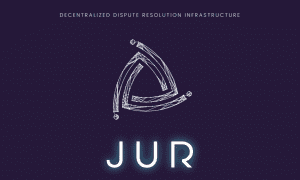Operational disruptions are more than just annoyances in today’s interconnected digital world; they can damage revenue, competitive advantage, and customer trust. Critical metrics for reducing these risks include Mean Time to Resolution (MTTR) and Root Cause Analysis (RCA). RCA identifies the fundamental cause of an issue, while MTTR measures the speed of resolution. Together, they provide a framework for operational resilience, but achieving excellence in these areas demands more than traditional approaches.
Root Cause Analysis is no longer limited to reactive troubleshooting because of the dynamic and interdependent nature of today’s systems, which include microservices, hybrid cloud environments, and Internet of Things devices. As a result, proactive and predictive methodologies must be adopted. Lakshmi Narasimha Rohith Samudrala, a specialist in this area, continues by emphasizing how automation, AI-driven insights, and advanced observability systems have contributed to the reduction of RCA and MTTR. His achievements in this domain, such as decreasing RCA times by 50% and reducing MTTR for recurring incidents by 40%, demonstrate the transformative potential of integrating modern technologies with operational strategies.
One of the most significant advancements in this field is the adoption of observability frameworks. Unlike traditional monitoring, which relies on isolated metrics, observability provides a single view into an entire system by correlating telemetry data like logs, metrics, and traces across distributed environments. Samudrala implemented AI-driven observability tools that provided real-time insights into hybrid cloud ecosystems, thus enabling the fast identification of performance bottlenecks. His team proactively replicated user behavior through synthetic monitoring, thus achieving a 95% anomaly detection rate before end-user impact.
Artificial intelligence is a cornerstone of modern RCA practices. AI shines when it has to comb through massive data sets to find anomalies and determine the root cause in minutes. Samudrala’s experience integrating AI-powered solutions, such as Dynatrace’s Davis AI, is just one example of how technology can go beyond human limitations. Not only do these tools streamline incident investigation, but they can also predict failures based on historical trends, taking organizations from reactive management to proactive prevention. As a result, he achieved 99.9% SLA compliance for critical applications and minimized customer-facing disruptions.
Automation further empowers RCA and MTTR by helping bridge the gap between detection and resolution. Identifying a root cause may be quite important, but the speed and accuracy of resolution really define customer experience. For recurring issues, automated pipelines-meaning predefined remediation actions, as implemented by Samudrala launch without the need for a human to intervene. This practice freed his team to deal with strategic work and reduced their manual error rate.
At the same time, cultural and organizational shifts are crucial for optimizing both RCA and MTTR. An honest, blameless postmortem culture enables transparency, learning, and accountability-without apportioning blame to particular person or roles. For Samudrala, clear protocols for escalations and collaboration within global teams accelerate the time taken towards decision-making. By setting up cross-functional teams with clear processes, he attained resolution times of 30% or lower on critical events.
Looking ahead, the convergence of observability and security will define the future of RCA. Security incidents are increasingly interrelated with performance issues, and a holistic approach will be imperative. Samudrala’s integration of security monitoring into the observability framework not only fixed the vulnerabilities but also ensured compliance to regulatory standards. As digital ecosystems grow more complex, the ability to secure systems while maintaining uptime will become a competitive differentiator.
The emerging trends in RCA and MTTR optimization are equally promising. Predictive analytics powered by AI and machine learning will let organizations identify ahead of time when failures will occur and take steps to prevent them, thus increasing Mean time between failures (MTBF). The observability tools will grow to observe the whole business process for deep insight into customer experience and operational efficiency. Meanwhile, edge computing and IoT adoption will extend RCA frameworks to decentralized environments, ensuring reliability at the network’s periphery.
As a result, in the current digital era, reducing the amount of time spent on RCA and MTTR will be a strategic capability of an organization. These solutions should combine technology, process, and culture. As Samudrala summarises, “Operational excellence is not achieved by addressing incidents faster; it’s achieved by preventing them altogether. When technology, collaboration, and foresight converge, the results are not just measurable—they’re transformative.”

































